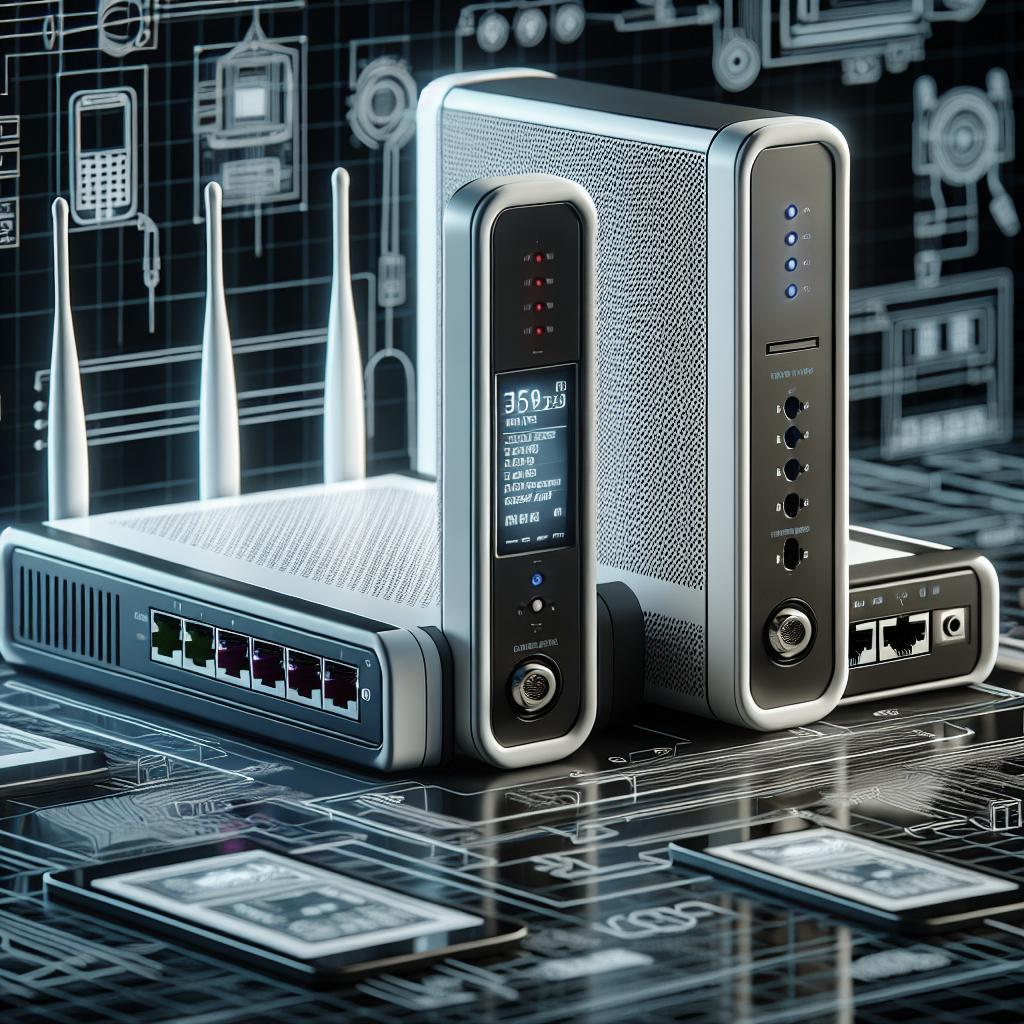The Difference Between a Modem and a Router
Modems and routers are integral parts of our daily digital lives, allowing us to connect to the vast expanse of the internet. Despite this, confusion often arises when differentiating between the two. This article delves into the functions of modems and routers, some of the top devices in the market, and tips on maintaining them. We’ll explore how each component contributes to your home network and guide you through ensuring the best internet efficiency for your needs. Whether you’re setting up a sole apartment or sprawling home network, understanding these devices will assure smooth digital navigation.
A future-proofed modem
Modems
Modems serve as the gateway to the internet. They are responsible for converting signals from your internet service provider (ISP) into a form that your devices can understand and use. When you connect to the internet, data travels over different types of infrastructure. For example, cable modems use coaxial cables, while DSL modems rely on phone lines.
A modem connects directly to your ISP, translating analog signals into digital signals for computers. Each ISP might require a specific kind of modem, so it’s important to verify compatibility. The modem is usually connected to a single device — either a computer or a router.
Arris SURFboard S33
The Arris SURFboard S33 is heralded as one of the top performers in modern internet connectivity. With its support for DOCSIS 3.1, it provides lightning-fast speeds and improved efficiency that can keep up with increasing internet demands. It’s ideal for gamers and streamers who need consistent speed and stability.
Moreover, the S33 boasts a sleek design with future-proofed technology. It’s a wise investment if you plan on upgrading to gigabit speeds. Onboard controls and an intuitive setup process make configuring your internet connection simpler than ever before.
The best Wi-Fi router
Routers
While a modem connects to the internet, a router serves as the master of your local network domain. It connects to the modem and then communicates with your devices — directing internet traffic and ensuring that the data packets find their way to the correct destination.
Routers not only allow multiple devices to connect to the internet simultaneously but also offer additional services like firewalls, virtual private networking (VPN), and device management. Choosing a router largely depends on the number of devices in your home and the coverage area you aim to support.
TP-Link Archer AX55
The TP-Link Archer AX55 exemplifies robustness in wireless technology. It’s equipped with Wi-Fi 6 capabilities, ensuring fast speeds even when multiple devices are in operation. With OFDMA and MU-MIMO technologies, it efficiently allocates bandwidth, minimizing congestion.
Beyond speed, the Archer AX55 also supports secure connections with WPA3 and advanced encryption. It’s designed for homes that have intensive internet usage requirements, providing expansive coverage that ensures every corner is connected.
Better for big spaces
Eero 6
The Eero 6 is an ideal choice for large homes or spaces with challenging layouts. Mesh networking has become increasingly popular for such settings, and Eero 6 stands out for its extremely user-friendly interface and reliable performance.
With automatic updates and easy setup, maintaining robust, seamless internet coverage is simplified. Eero 6 utilizes a mesh system with multiple nodes that work together to blanket your home in Wi-Fi, eliminating dead spots and allowing devices to connect effortlessly as they move through the house.
Mentioned above
Troubleshooting and maintaining your router or gateway
To keep your home network running smoothly, regular maintenance of your modem and router is essential. Begin by routinely rebooting these devices to clear any potential issues stemming from ongoing processes. Wired connections should be checked for damage, and cables should be firmly secured.
For routers, occasional firmware updates will ensure their security and efficiency are up-to-date. Most modern routers have an option for automatic updates, simplifying this process. Finally, for any persistent issues, consulting your device manuals or contacting technical support can help resolve connectivity problems swiftly.
Further reading
Your Home Internet Bill Can Be Deceptively Confusing. Now It’s (Slightly) Easier to Understand.
Understanding the charges on your internet bill can often feel daunting. Breaking down the details of your service plans, equipment fees, and overages can help you manage these expenses more effectively.
iPhone vs. Android: Which Is Better for You?
The debate between iPhone and Android users is longstanding. Factors such as ecosystem integration, customization capability, and price points might sway your decision depending on personal needs and preferences.
The Gear to Get Reliable Wi-Fi in Any Home
Creating a robust Wi-Fi setup might require additional gear like repeaters, mesh systems, or strategically positioned extenders. These tools can augment coverage, ensuring that every device receives a strong signal no matter where it is located.
Wirecutter’s 5 Most Popular Picks in October 2019
Wirecutter’s curated list of top technology picks provides insightful guidance on essential gear that can improve your home tech setup. These recommendations can inform your decisions on the best equipment to invest in.
Future prospects
| Category | Description |
|---|---|
| Modems | Devices that connect to your ISP and translate analog signals into digital formats that can be used by your devices. |
| Arris SURFboard S33 | A high-performing modem with DOCSIS 3.1 support, providing excellent speed and future-proof technology. |
| Routers | Devices that connect to your modem and manage data traffic within your local network. |
| TP-Link Archer AX55 | A Wi-Fi 6 router offering high speed, secure, and efficient bandwidth allocation for multiple devices. |
| Eero 6 | A mesh system designed for expansive Wi-Fi coverage in large homes, eliminating dead spots and ensuring seamless connectivity. |


